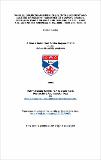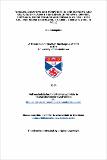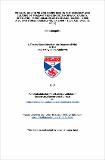Files in this item
Whales, dolphins and porpoises in the economy and culture of peasant fishermen in Norway, Orkney, Shetland, Faroe Islands and Iceland, ca.900 - 1900 A.D., and Norse Greenland, ca.1000 - 1500 A.D.
Item metadata
| dc.contributor.advisor | Smout, T. C. (T. Christopher) | |
| dc.contributor.author | Lindquist, Ole | |
| dc.coverage.spatial | 2 v. (in 3) | en_US |
| dc.date.accessioned | 2012-07-09T15:33:26Z | |
| dc.date.available | 2012-07-09T15:33:26Z | |
| dc.date.issued | 1994 | |
| dc.identifier.uri | https://hdl.handle.net/10023/2953 | |
| dc.identifier.uri | http://fishernet.is/en/whale-a-seal-hunting | |
| dc.description | Thesis also available on the Fishernet Project's website: http://fishernet.is/en/whale-a-seal-hunting | en_US |
| dc.description.abstract | By way of introduction the thesis considers Norse whaling history, in general, concepts like 'whaling tradition', 'whaling culture', and describes the approach to the divers studies of cetaceans in Norse peasant fisherman economy and culture and of Norse whaling techniques, ca 900-1900 AD. It is argued that the Icelandic littoral and inshore régime reflects the primordial Norse régime in which property zones on land are 'mirrored' in the littoral and the sea; furthermore, that the Orcadian-Shetlandic Udal ebb limit is not Norse in origin. Norse mediaeval cetology and popular views about real and fictitious whales are studied. Many whales are identified, including the now extinct North Atlantic gray whale is positively identified as previously well-known to, and hunted by, the Icelanders. It is argued that traditional Norse whale measures in 'ells' are not exaggerated extent measures but often exact appraisement sums, using a unit called *hvalsalin ('whale ell'). Few ritual aspects are found but in West Norway peasant fisherman apparently sustained, into the 19th century, a tradition of sacrificing whale tails to the old Norse god Njörðr. Mediaeval and early modern Norwegian whale traps are discussed and land rise suggested as one reason for their disappearance. A technical and linguistic analysis demonstrates that mediaeval Norse whaling with piercing weapons, rather than being hand harpoon tow whaling, was spear whaling which continued in Norway until 1870 and in Iceland to the mid 1890s. Spear whaling explains the elaborate Icelandic system of registrating whaling shot marks and partly the wide 'driftage zone' of coastal estates there. Spearing and arrowing caused clostridium infection in the whales which usually died in a matter of days after which some were recovered. It is also argued that gaffing of larger cetaceans constitutes a separate whaling method. The Appendix contains numerous calendars and sources in the original, including transcriptions of parts of the 'Icelandic fishlore' by Jón Ólafsson frá Grunnavík, 1737, and the whole treatise by Andreas Christie, 'Account of the whaling in Sotra district', West Norway, from 1785/86, all with tentative English translations and summaries. | en_US |
| dc.language.iso | en | en_US |
| dc.publisher | University of St Andrews | |
| dc.subject.lcc | SH383.L5 | |
| dc.subject.lcsh | Whaling--History | en_US |
| dc.title | Whales, dolphins and porpoises in the economy and culture of peasant fishermen in Norway, Orkney, Shetland, Faroe Islands and Iceland, ca.900 - 1900 A.D., and Norse Greenland, ca.1000 - 1500 A.D. | en_US |
| dc.type | Thesis | en_US |
| dc.type.qualificationlevel | Doctoral | en_US |
| dc.type.qualificationname | PhD Doctor of Philosophy | en_US |
| dc.publisher.institution | The University of St Andrews | en_US |
This item appears in the following Collection(s)
Items in the St Andrews Research Repository are protected by copyright, with all rights reserved, unless otherwise indicated.



